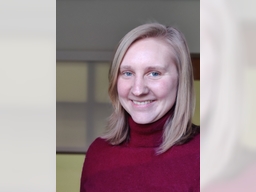Colloquium: Dr. Alaina Green| University of MD, College Park
In-Person PHYS 401
Location
Physics : 401
Date & Time
February 1, 2023, 11:00 am – 12:00 pm
Description
TITLE: Novel Applications and Noise-enabled Control for a Trapped-ion Quantum Computer
ABSTRACT: Trapped atomic ions are a well-established and highly versatile platform for quantum computation and simulation. In this talk, I will first provide a brief overview of the quantum control which makes such a device operable both as a fully programmable, digital, quantum computer, and as an analog quantum simulator of various models in physics, chemistry and beyond. Next, I will share recent results from operating the same trapped-ion demonstrator device in both modes. In the first result, we executed a fully digital quantum algorithm to perform the first measurement of out-of-time-order correlators in a quantum system at a chosen temperature, demonstrating a missing ingredient in the application of quantum simulators to studying quantum scrambling in the context of diverse and interconnected fields such as many-body physics and quantum gravity. The second result is an analog quantum simulation of particles with exotic statistics in which the native interactions between qubits are used to mimic the dynamics of these para-particles. In the last part of my talk, I will use a brief comparison of the two results to highlight the need to harness yet unused quantum states available in trapped ion quantum hardware and present my plan for using these extra resources to better understand the critical intersection between quantum devices and their environments.
ABSTRACT: Trapped atomic ions are a well-established and highly versatile platform for quantum computation and simulation. In this talk, I will first provide a brief overview of the quantum control which makes such a device operable both as a fully programmable, digital, quantum computer, and as an analog quantum simulator of various models in physics, chemistry and beyond. Next, I will share recent results from operating the same trapped-ion demonstrator device in both modes. In the first result, we executed a fully digital quantum algorithm to perform the first measurement of out-of-time-order correlators in a quantum system at a chosen temperature, demonstrating a missing ingredient in the application of quantum simulators to studying quantum scrambling in the context of diverse and interconnected fields such as many-body physics and quantum gravity. The second result is an analog quantum simulation of particles with exotic statistics in which the native interactions between qubits are used to mimic the dynamics of these para-particles. In the last part of my talk, I will use a brief comparison of the two results to highlight the need to harness yet unused quantum states available in trapped ion quantum hardware and present my plan for using these extra resources to better understand the critical intersection between quantum devices and their environments.
